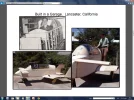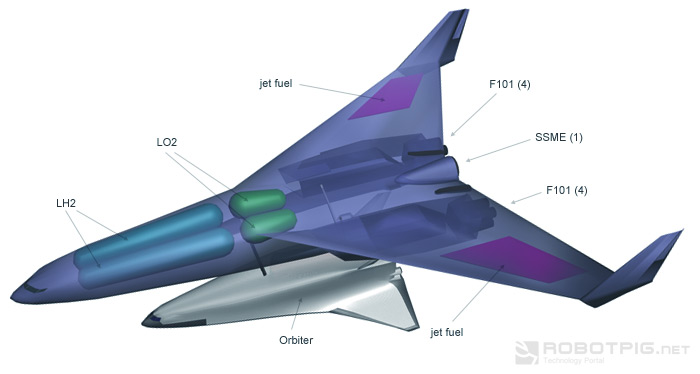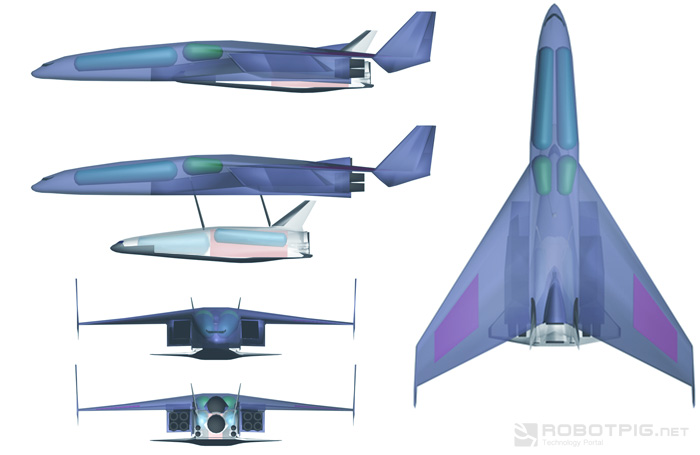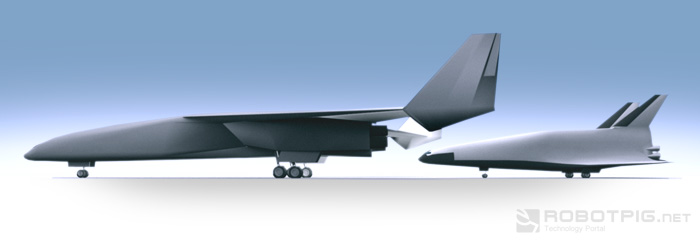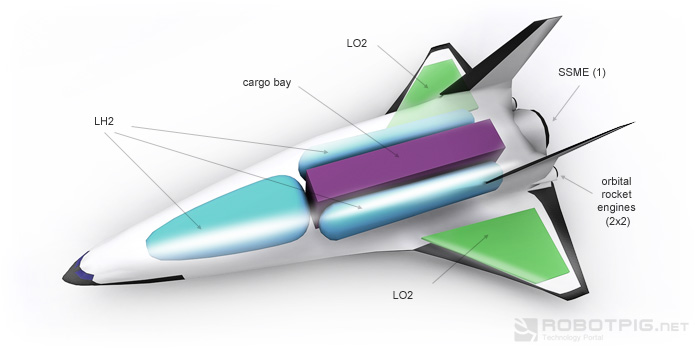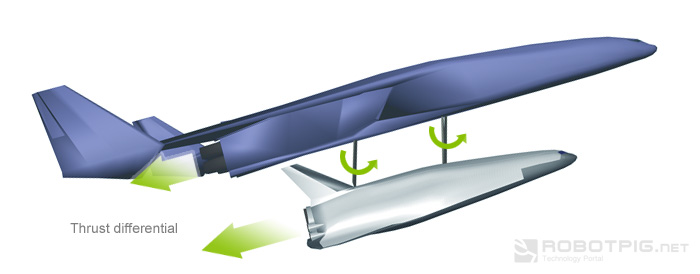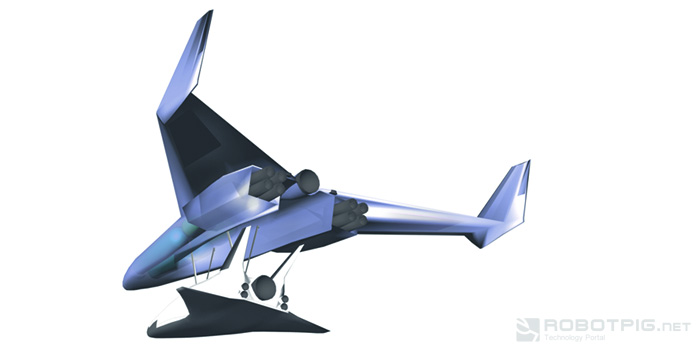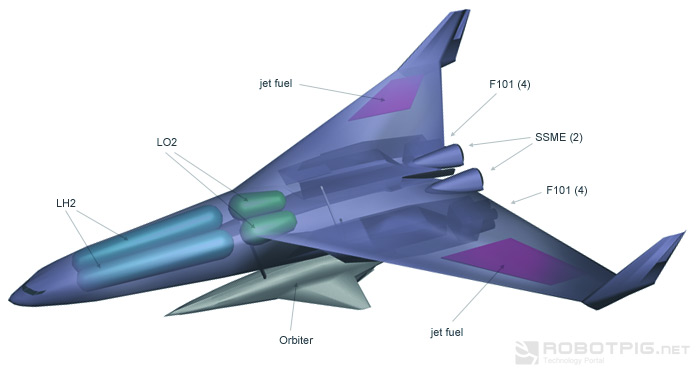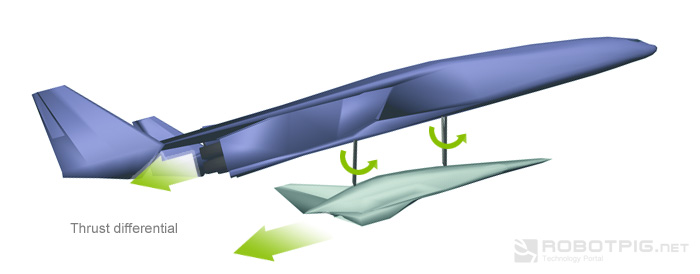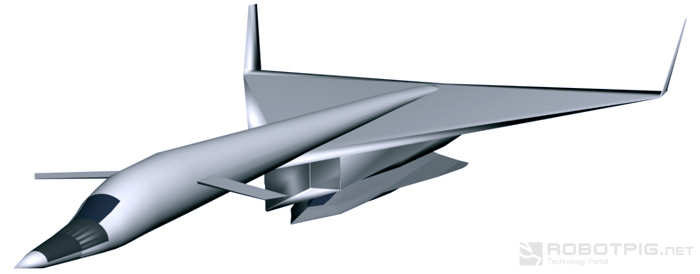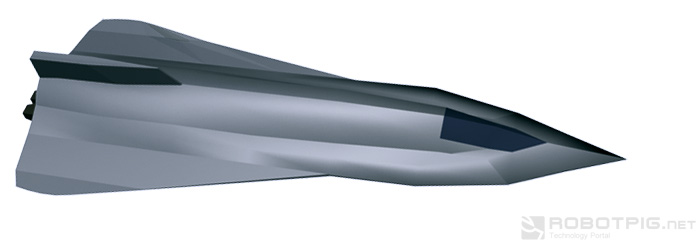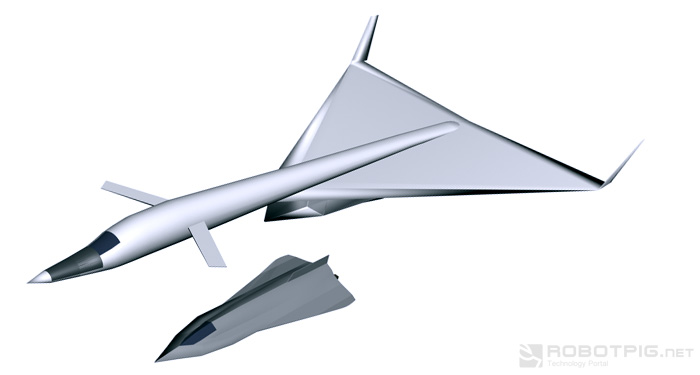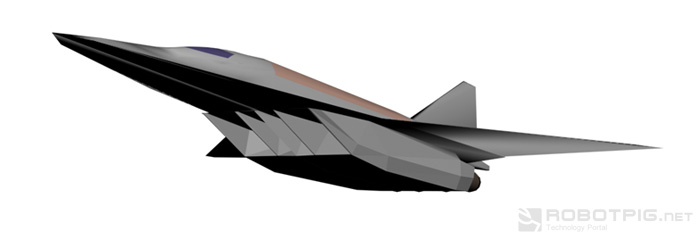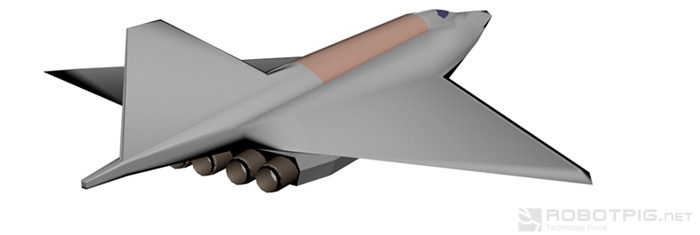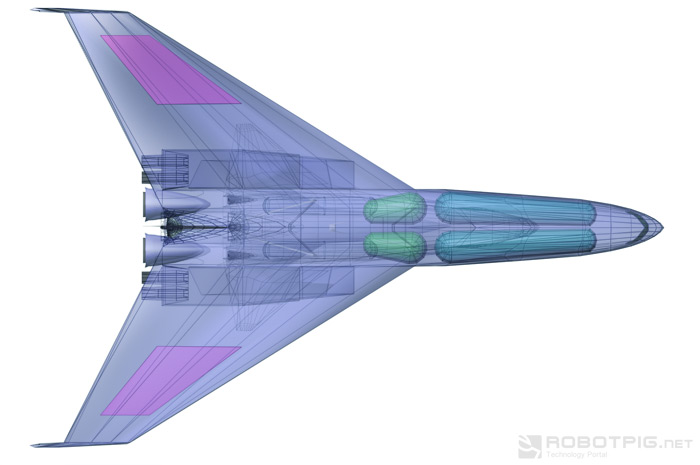Asiaa avaruuslentokoneista
http://robotpig.net/__aerospace/tsto.php?page=1
TSTO spaceplanes
Introduction
Until now, apart from the STS space shuttle almost every space program is based around vertically launched expendable rockets. These rockets not only they are very expensive but they also are very difficult to operate. In most circumstances a long period of many days, weeks or months of preparations is needed for a successful launch.
It is a widely spread belief that the ideal vehicle would be a system that could take off horizontally like a conventional airliner, reach high altitude and place its cargo in to orbit and later land also as a conventional airplane. This system would combine the operational agility of common aircraft with very low operating cost because it would be almost completely reusable. However the previous concept (single stage to orbit - SSTO) would require a huge amount of thrust potential from the engines and so it is quite a leap from the technology available at the time being.
The following projects are two stage to orbit (TSTO) vehicles that consist from a carrier aircraft and a -smaller- orbital vehicle. The first is a presentation of a patent application by Boeing in two variations of a tsto system, the second is a XB-70 derived project known as Blackstar and the third is the short-lived rascal project of DARPA.
Boeing (SSME)
This part of the present article is based on a patent application filed by Boeing in 1989 (US 4,802,639). This system is described in two variations, the one with an orbital vehicle that uses a liquid fuel rocket engine and the other with an orbiter using a scramjet. The carrier mothership is similar in both derivatives.
The carrier is quite a large aircraft; it houses 8 jet engines and a liquid propellant rocket engine. The fuel tanks for the rocket engine are placed in the front part of the fuselage and the tanks for the jet engines are inside the wings. The jet engines are housed in two quad sets under the wings and the patent refers to a GE F101 as a proposed engine. It is worth mentioning that the 2.2 mach B-1B bomber uses only 4 of these jet engines. The single rocket engine is placed at the upper rear end of the fuselage and it is an SSME of Rocketdyne as used in the Space Shuttle. This engine uses liquid oxygen and hydrogen and is also fully throttlable.
Between the two jet engine housings there is a large cavity in the fuselage where the orbital vehicle is carried conformaly. This cavity is big enough in order almost the entire orbiter to fit in. Thus it is very easy during the assembly on the ground to roll the orbiter underneath the carrier by using its own landing gear.
The orbital vehicle is a winged aircraft with its own propulsion system and landing gear, as already mentioned. It also uses an SSME engine and it has a cargo bay between the two main fuel tanks inside the fuselage. For orbital and re-entry manoeveurs it also has 4 smaller rocket engines in the aft part of the fuselage.
Flight Profile.
The two aircraft connected together are jointly take-off horizontally as a conventional airliner by using only the 8 jet engines of the carrier. .
At an altitude of 30.000ft and a velocity of 0.85 mach the two rocket engines are activated.
One very crucial point of the design is the interconnection between the rocket propellant tanks of the carrier and the orbiter. The fuel line is using primarily the carrier tanks to feed both vehicles' rocket engines and when it is time for the orbiter to detach it has a completely full tank.
The separation between the two vehicles occurs at 103.000ft and a velocity of 3,3mach. To initiate the process the carrier reduces its thrust to create a thrust differential between itself and the orbiter. The latter rolls out following the circular path that the two supporting struts dictates. The connecting rods in the orbiters upper surface are designed in a way to sustain no force when the strut angle is almost 90 degrees or more. So when the orbiter rolls out low and front enough it is released automatically from the mothership and resumes ascending to orbit with its tanks full of propellant.
The carrier mothership continues to ascend by its momentum and it reaches a maximum altitude of 127.000ft with an airspeed dropped at 2.84 mach and then it starts to descend in order to land as a conventional airplane.
The orbiter ascends until it enters to orbit. After it accomplish its mission, it performs a re-entry maneuver by using its auxiliary rocket engines and by following a high-drag flight profile it is entering the earths atmosphere gliding while reducing its airspeed (similarly to the space shuttle orbiter) until it finally lands horizontally.
_______________________________
Boeing (Scramjet)
This derivative of Boeing's proposal the carrier is identical with the version already described but it has two SSME engines in the back.
The orbiter is also a winged aircraft but it has a scramjet engine instead of a rocket. The scramjet uses the atmosphere's oxygen as oxidizer so the aircraft needs only tanks for fuel. It also has an auxiliary rocket engine for orbital maneuvering.
The flight profile is quite different because the scramjet needs to be inside the atmosphere in order to function properly. The two vehicles jointed take off using only the jet engines and again at 30.000ft and 0,85 mach the two rocket engines are ignited. When reaching 80.000ft and 2,5 mach the scramjet is starting to produce thrust and with the 2 rocket engines the joint aircrafts reach a velocity of 3,3 mach at only 90.000ft (the other version needs to climb at 103.000ft to reach that speed). At this altitude and speed the separation process is initiated and it is the same as described above.
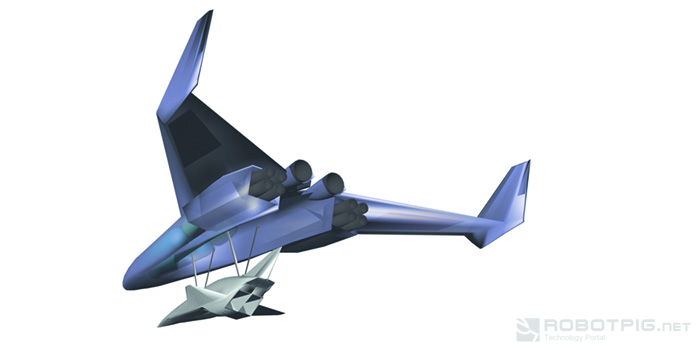
After the separation the carrier heads for landing. The orbiter needs to remain below 40 miles of altitude because of the scramjet, so it accelerates to reach a velocity in excess of the required 25.700ft/s. When reaching the upper boundaries of the atmosphere the orbiter is moving at 26.200ft/s and while the scramjet shuts down due to lack of oxygen the orbiter uses its momentum to ascent at an altitude of almost 100 miles and enter to orbit. In this stage it also uses the auxiliary rocket engine to sustain orbit and to maneuver in space. After it accomplishes its task it re-enters the earth's atmosphere and sails to landing.
conclusions for both versions
This system is very flexible, both vehicles are completely reusable and need minimal pre-launch preparations before or after their flight. It can place cargo or people into orbit in short notice and repeat the same task in a very short period of time. No complex ground establishment or equipment is needed in contrast with the space shuttle or other vertically launched rockets which requires a lot of ground gear and personnel to support their launch and landing. There isn't also the handicap of the optimum equatorial launch coordinates that most rockets are facing. The system can transit to a place close to equator by using its jet engines and launch the orbiter with a minimum penalty in rocket fuel consumption.
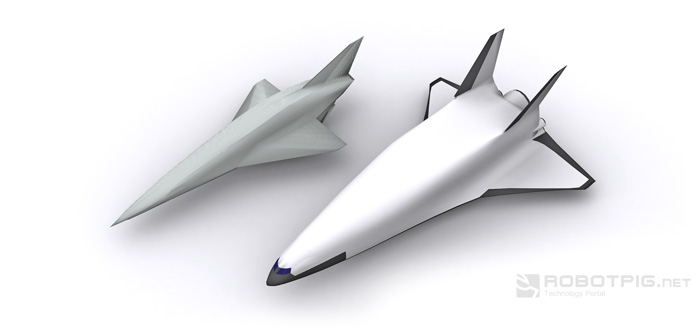
Apart from the scramjet engine which is still in early experimental development stage, almost the entire technology that this project needs is not only operational but almost 25 years in use (the F101 and SSME engines for example). Of course the integration and final design of such a vehicle will be a very elaborate task. This proposal never reached production or early development stage (officially at least) some of its core design elements seems to derive or being used in the -unofficially named- Blackstar system.
_________________________________
Blackstar
This system is presented in an article of Aviation Week & Space technology and has a lot of similarities not only to Boeings TSTO described above but also to the XB-70 'Valkyrie' experimental trisonic bomber. The later was designed by North American Aviation, which later -as Rockwell- merged with Boeing. The information about Blackstar is blurry and of course unofficial. Its action is mostly placed in the 90s and the system consist from the carrier aircraft named SR-3 and the orbiter named XOV from 'experimental orbital vehicle'.
The carrier aircraft has many similarities with the XB-70 bomber. It is possible that not only the equipment and infrastructure for producing the XB-70 but also the 3rd unfinished XB-70 prototype was used as well for the development of the SR-3.
The main external difference is at the wingtips. The XB-70 used a revolutionary movable at almost 90 degrees angle delta wingtips which produced a substantial amount of lift due to compression of the flow. The SR-3 has instead simple winglets which are quite large and stabilize the aircraft instead of the conventional vertical tails of the XB-70.This difference is probably due to the lower maximum speed of the SR-3 which rendered the XB-70 layout useless.
SR-3 used at least four turbojets (possibly six General Electric YJ-93-3 like XB-70). The engines were placed in two groups leaving a cavity between them where the orbital vehicle nested conformally. The XOV has a length of about 180-200ft which is approximately the length of XB-70's engine bay.
While XB-70 used a wing made from composites with a honeycomb core, SR-3's were constructed more conventionally from aluminum with a simpler structure due to a smaller maximum airspeed of 2 mach (instead of XB-70's 3.3+ mach) which stresses a lot less both thermally and structurally the wing and frame.
In the front there are two canard wings which are reported to be seen both inclined front or rear. It is believed that the canards could alter the sweep angle (from front sweep to rear) to compensate for the change of the relative distance between the center of gravity and the center of aerodynamic pressure when the XOV is released.
XOV
The orbiter is a lifting body with small blended wings. It has dropped winglets possibly to take advantage of compression lift as -in quite larger scale- did the original XB-70. Its fuselage was constructed from advanced composite materials with a sandwich honeycomb core and it has a length of 97.5ft. There probably was a smaller, possibly unmanned, version also.
The vertical stabilizer was quite thick and was also the connecting strut with the carrier aircraft.ας στήριξης με το SR-3.
XOV used very advanced rocket engines, not only they had aerospike nozzles, but they used a boron based gel as fuel. This gel is much denser and has a lot more specific energy when burned than conventional fuels. The XOV used four aerospike rocket engines with 2D nozzles which were developed before the XRS-2200 that the X-33 would use if evolved to be operational. Additionally there was also a small rocket engine in the base of the vertical stabilizer (right above the 4 main engines), which probably was used for orbital and re-entry maneuvers.
XOV's landing gear was a combination of wheels and skis.
There are very few information or even speculations about the flight profile of the Blackstar system. XB-70 has a maximum operational altitude of 75.000ft so it is possible that SR-3 reached this altitude with a maximum airspeed of 2 mach before releasing the XOV. Then the SR-3 was heading for landing while the XOV reached orbit and performing its task before re-enter the atmosphere and land also.
The orbiter was transported from the landing site with the use of modified C-5B military cargo aircraft. These heavily modified C-5s had a wider fuselage (+8ft), internal changes in the cargo bay and a stronger landing gear.
The Blackstar system had a lot of novelties but it was based in tried and tested technology. It probably performed several missions in total secrecy (there are rumours for the existence of quite a few XOVs) and its technology while not readily avaliable exist as a know how for future designs.
___________________________________
DARPA - RASCAL
The RASCAL (Responsive Access Small cargo Affordable Launch) is smaller than the 3 systems described above and also it isn't totally reusable. It is though very similar in concept. It consists of a carrier aircraft and an expendable small rocket as a second stage.
The RASCAL was a project initiated by DARPA and Scaled Composites was to build the main carrier aircraft. Allied Aerospace was to install and integrate the propulsion system while the overhaul management was awarded to Space Launch. Although it was cancelled it has already reached early development.
The fuselage was 89ft long and the wingspan was 81ft with a wing area of 2700sq.ft. Cargo bay was 42ft long and the aircraft's gross weight was 80.000lb with a maximum of 16.000lb of cargo.
The aircraft used four turbofan engines, with the P&W F100 as proposed (also used in the F-15/F16 fighters). Its main novelty was the MIPCC system in the engine which made the system feasable.
The second stage was an expendable 2 stage rocket with solid propellant or hybrid propulsion.
Flight profile
The aircraft reaches 3.1 mach at 63.000ft and with a steep climb ascends to 200.000ft while decelerating to 1.2 mach. At this point it launches the rocket to place its cargo into orbit.
During the entire flight path the lateral forces never exceed 4g while the longitude forces remain under 5g, in order to stress the cargo no more than a vertically launched rocket.
Rascal's main advantage is its operational flexibility, it can be used anytime and re-launched again in 24 hours after its mission.
The projects that were presented in this article although cancelled or even at the verge of science fiction indicates that with the current (or even 30 year old!) technology we can have easy, safe and cheap (especially if mass produced) access to space. Today apart from the partially reusable space shuttle we are using expensive, unsafe and difficult to operate expendable rockets. Maybe the day that access to orbit will be almost as easy as using an airliner isn't very far.
(article update 25-10-2010 - IKE)

